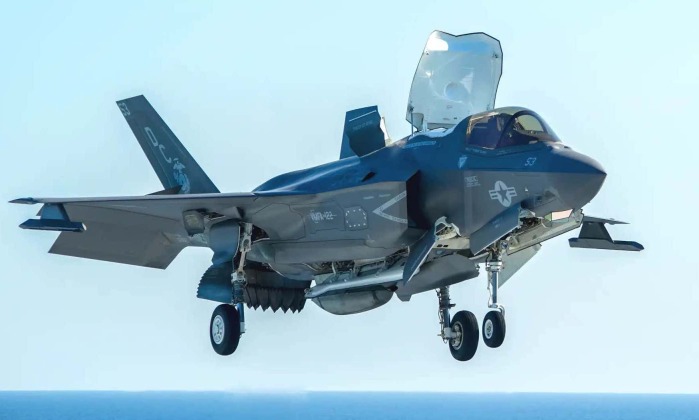News
F-35 Recipients Continue to Complain of Excessive Quality Assurance Defects: Marines Dissatisfied

The Pentagon’s Defence Contract Management Agency has reported that F-35 fifth generation fighter aircraft produced by Lockheed Martin continue to suffer from excessive flaws when delivered to their clients, with these impacting the aircraft’s performance including flight readiness rates. Military customers, mostly recently the U.S. Marine Corps, “are still expressing to us that too many quality assurance defects are escaping to the field,” which is “an issue for the user community and a major concern negatively impacting” readiness, the agency observed. It further highlighted that “parts shortages continue to cause production inefficiencies” leading to “delays for many aircraft.” Even as F-35 production increases, in-plant “scrap, rework and defect” rates “continue to limit production efficiency during assembly” because of “workforce turnover and some poor-performing suppliers.” With the Marine having raised particular concerns recently regarding the aircraft’s issues, the Pentagon’s F-35 Program Office has stated that it is working with Lockheed Martin to “constantly monitor quality assurance and actively address every concern as identified.” The office also is “working to understand and mitigate” Marine Corps concerns.
Although the F-35 program has proved among the most problematic in American history, the fact that production facilities for the aircraft exceed the capacity of those for all other Western fighter classes combined, and that no other NATO compatible fighter with post fourth generation capabilities has been produced in well over a decade, means that the Pentagon has few alternatives to continuing with the program. Issues with availability rates have drawn particular criticisms in recent months, with a growing number of lawmakers in the House of Representatives having raised concerns regarding the ability of the F-35 Joint Program Office to improve the aircraft’s performance in this respect. Chairman of the House Armed Services subcommittee on tactical air and land forces Rob Wittman, for example, on September 29 highlighted that issues with the aircraft were “deeply concerning,” and that “there’s a lot of what we expect out of the aircraft, and there’s some shortcomings there about what has been promised and then what is being delivered.” “It’s a new aircraft — why is it at 55%?,” he stated regarding its poor availability rates, adding: “You would think on a new production line, … you would learn pretty quickly what your maintenance and repair models would be. All of those things seem to be lacking in this. It seems to be, just get the aircraft off the assembly line and let the Air Force essentially operate on its own afterwards.”

Issues with the F-35 have been far from isolated to its availability rates, with a notable recent example being the findings of a U.S. Air Force investigation released in June showing that an F-35 destroyed in an accident at Hill Air Force Base in Utah on October 19, 2022, had crashed due to a software issue. This left the pilot unable to abort its landing sequence as it stopped responding and sharply banked to the left. Belgium in August notably refused deliveries of the first to F-35A stealth fighters after finding them to be “technically unsatisfactory” and requiring further software improvements before meeting its air force’s standards, while other clients such as South Korea have had serious issues with the aircraft and its wide ranging performance defects. New information on shortcomings with the fighter’s F135 engine in 2023 has shown that it has caused fighter unavailability at 600 percent the rates of fourth generation fighters in the U.S. Air Force, while also costing tens of billions of dollars in additional operational costs due to its insufficient power output. The F-35 will nevertheless continue to be relied on increasingly heavily by the United States Military and a growing number of its security partners, particularly as China rapidly expands its own fleet of fifth generation fighters with the J-20 and FC-31 programs which have very significant performance advantages over all other fighters in the U.S. and allied fleets.












